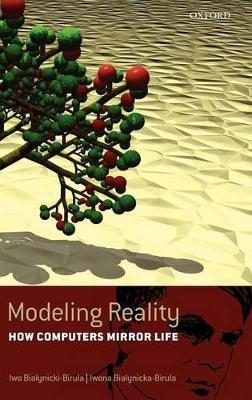
Modeling Reality
Oxford University Press (Verlag)
978-0-19-853100-5 (ISBN)
The book Modeling Reality covers a wide range of fascinating subjects, accessible to anyone who wants to learn about the use of computer modeling to solve a diverse range of problems, but who does not possess a specialized training in mathematics or computer science. The material presented is pitched at the level of high-school graduates, even though it covers some advanced topics (cellular automata, Shannon's measure of information, deterministic chaos, fractals, game theory, neural networks, genetic algorithms, and Turing machines). These advanced topics are explained in terms of well known simple concepts: Cellular automata - Game of Life, Shannon's formula - Game of twenty questions, Game theory - Television quiz, etc. The book is unique in explaining in a straightforward, yet complete, fashion many important ideas, related to various models of reality and their applications.
Iwo Bialynicki-Birula, Center for Theoretical Physics, University of Warsaw, Poland Warsaw University PhD in Theoretical Physics 1959 University of Rochester, Research Associate 1959-1961 University of Pittsburgh, Visiting Professor 1969-1971, 1985-1986 University of Frankfurt, Visiting Scholar 1992-1993 University of Ulm, Alexander von Humboldt Award Recipient 1994-1995 Iwona Bialynicka-Birula, Galileo Galilei School, University of Pisa, Italy MS in Computer Science from Warsaw University 2003
1. From Building Blocks to Computers: Models and Modeling ; 2. The Game of Life: A Legendary Cellular Automaton ; 3. Heads or Tails: Probability of an Event ; 4. Galton's Board: Probability and Statistics ; 5. Twenty Questions: Probability and Information ; 6. Snowflakes: The Evolution of Dynamical Systems ; 7. The Lorenz Butterfly: Deterministic Chaos ; 8. From Cantor to Mandelbrot: Self-Similarity and Fractals ; 9. Typing Monkeys: Statistical Linguistics ; 10. The Bridges of Konigsberg: Graph Theory ; 11. Prisoner's Dilemma: Game Theory ; 12. Let the Best Man Win: Genetic Algorithms ; 13. Computers Can Learn: Neural Networks ; 14. Unpredictable Individuals: Modeling Society ; 15. Universal Computer: The Turing Machine ; 16. Hal, R2D2 and Number 5: Artificial Intelligence ; Epilog ; Programs ; Further Reading ; Index
| Erscheint lt. Verlag | 21.10.2004 |
|---|---|
| Zusatzinfo | numerous line drawings & halftones |
| Verlagsort | Oxford |
| Sprache | englisch |
| Maße | 163 x 242 mm |
| Gewicht | 454 g |
| Themenwelt | Informatik ► Grafik / Design ► Digitale Bildverarbeitung |
| Mathematik / Informatik ► Mathematik | |
| Naturwissenschaften ► Physik / Astronomie ► Thermodynamik | |
| ISBN-10 | 0-19-853100-1 / 0198531001 |
| ISBN-13 | 978-0-19-853100-5 / 9780198531005 |
| Zustand | Neuware |
| Haben Sie eine Frage zum Produkt? |
aus dem Bereich


